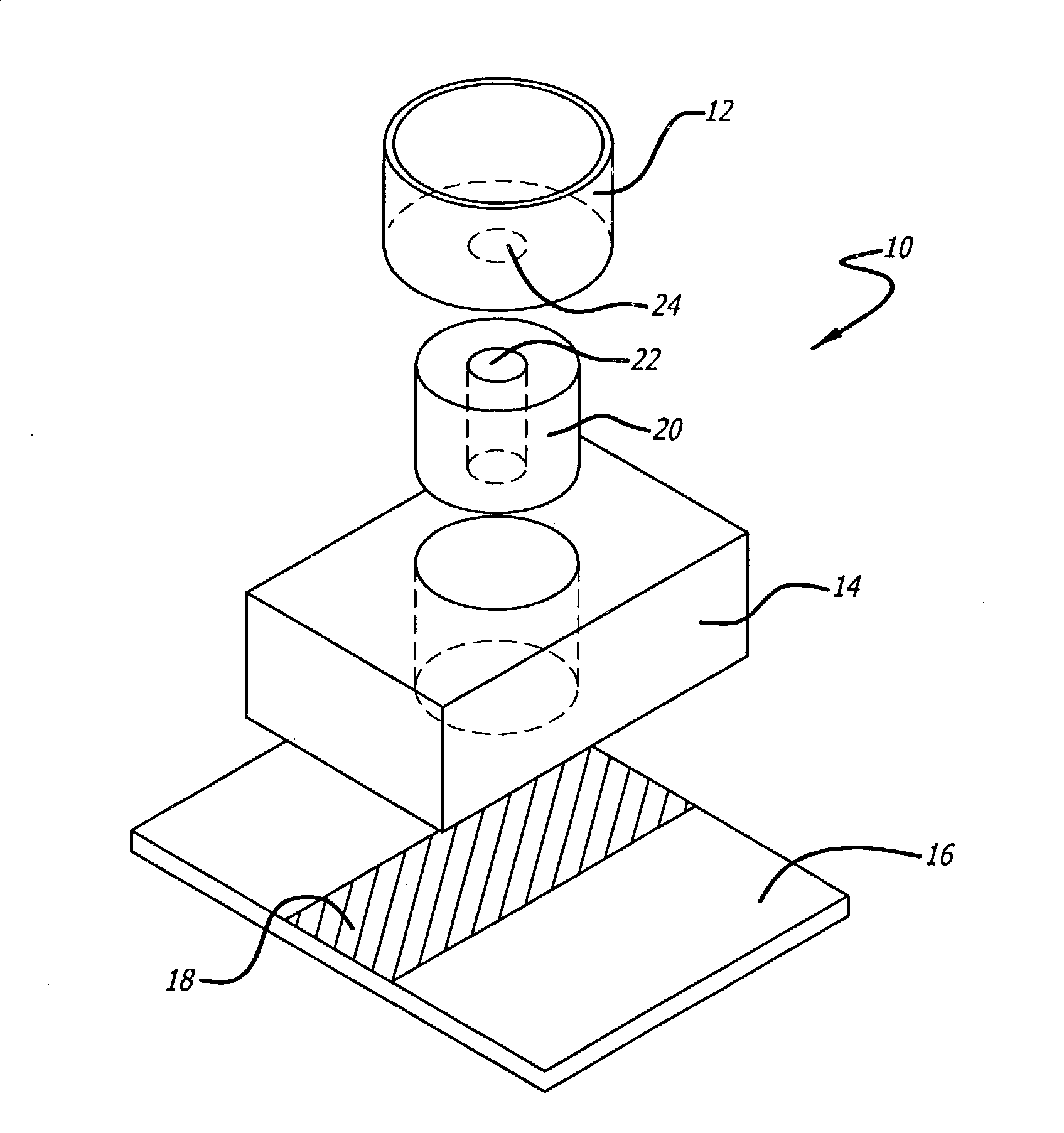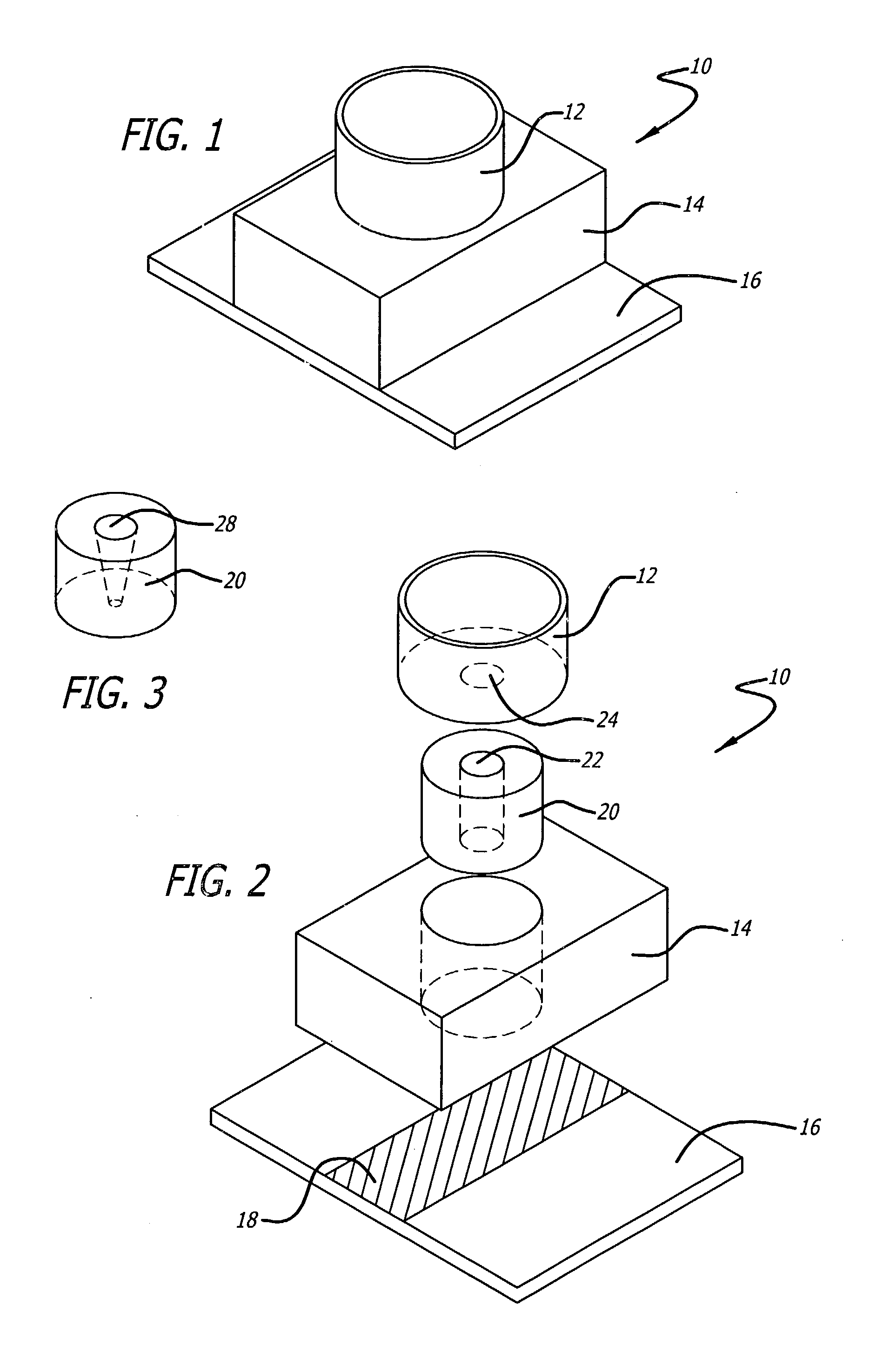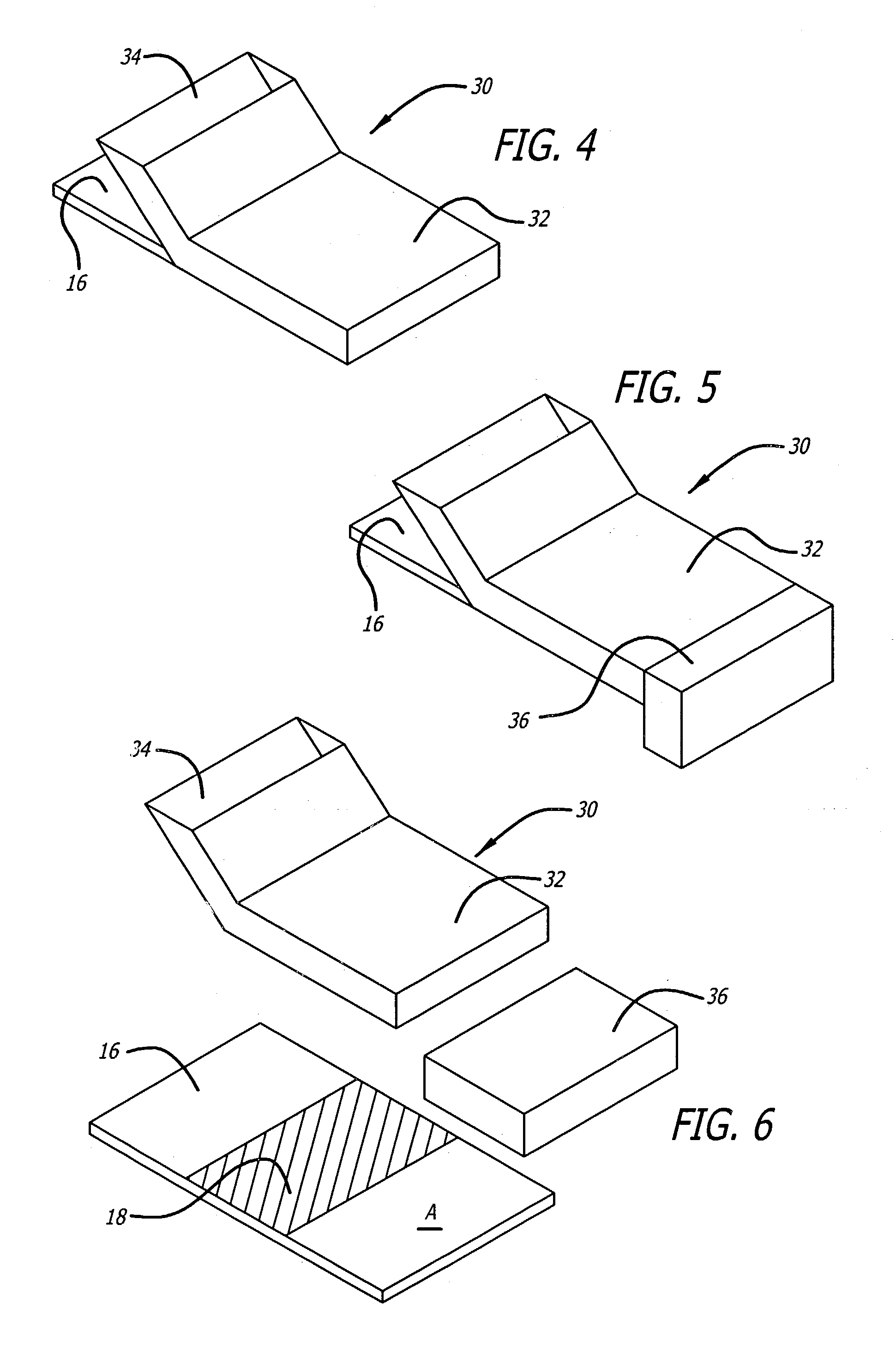Devices and methods for isolating target cells
- Summary
- Abstract
- Description
- Claims
- Application Information
AI Technical Summary
Benefits of technology
Problems solved by technology
Method used
Image
Examples
Embodiment Construction
[0023]The present invention relates to devices and methods of isolating and identifying a desired target cell on a single substrate. More specifically, the desired target cell is isolated from the various cells by targeting the various antigens found on the cell membrane of the target cell. That is, the present invention utilizes monoclonal antibodies that are directly conjugated to biotin and to a marker molecule wherein the conjugated antibodies are designed to bind to particular antigens found on the target cells. The present invention also utilizes the unique binding affinity of biotin (or biotin derivatives) to avidin or streptavidin to isolate the desired target cell from the cellular mixture. The target cells are separated from the cell suspension when the cell suspension is passed over an immobilized avidin or streptavidin substrate. As a result, the conjugated cells adhere to the avidin / streptavidin substrate, while the unbound cells are washed off and collected in a wickin...
PUM
| Property | Measurement | Unit |
|---|---|---|
| Height | aaaaa | aaaaa |
| Diameter | aaaaa | aaaaa |
| Shape | aaaaa | aaaaa |
Abstract
Description
Claims
Application Information
 Login to view more
Login to view more - R&D Engineer
- R&D Manager
- IP Professional
- Industry Leading Data Capabilities
- Powerful AI technology
- Patent DNA Extraction
Browse by: Latest US Patents, China's latest patents, Technical Efficacy Thesaurus, Application Domain, Technology Topic.
© 2024 PatSnap. All rights reserved.Legal|Privacy policy|Modern Slavery Act Transparency Statement|Sitemap



